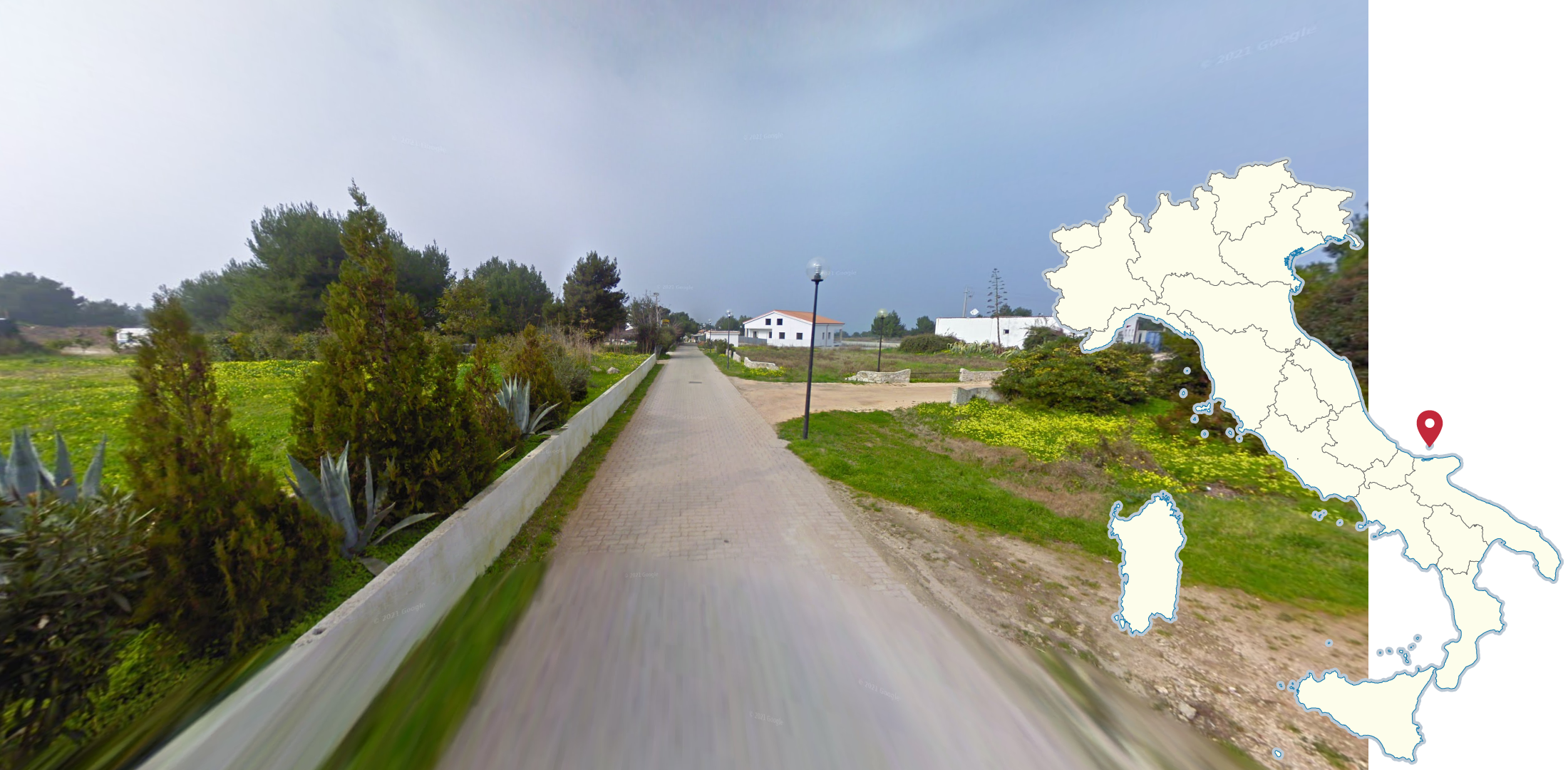
Italy
Contrary to most European licence plates, Italian plates have blue strips on either side of the plate. Furthermore, the front plate is distinctly shorter than most European plates, which in combination with the two strips, makes it unique.
NOTE: Albanian licence plates also have two blue strips, and French licence plates have a smaller strip on the right. However, neither Albanian nor French front plates are short.
Italian guardrails feature red front reflectors.
NOTE: This is most useful to distinguish Italy from Spain, which uses yellow reflectors. For a good overview of European guardrails, see this infographic.
Italian road numbers will normally begin with the letters “SS”, “SR” or “SP”.
The second letter can be used to identify the type of road.
"S" when it is a State road, so the number is unique within the country.
"R" when it is a Regional road, so the number is unique to the region.
"P" when it is a Provincial road, so the number is unique to the province.
Italy has Generation 4 “smallcam” coverage, which is mounted lower than regular Generation 4 and has a relatively big circular blur with a small protrusion at the front. The blur can also be fully transparent, making it harder to spot.
NOTE: Most of Southern Europe also has smallcam except for Spain.
Languages
Landscapes and vegetation
The Padan Plain (commonly referred to as Po Valley) can typically be recognized by its complete flatness. The plain has some of the worst air quality in Europe, which has led to much of the coverage having a noticeable haze.
The landscape on the southeastern peninsula surrounding Bari has many olive plantations, which are often seen together with bright rock walls. The dirt in the region typically has a noticeably red colour.
Beware that a similar landscape can also be found in southeastern Sicily.
Grey rocks sticking up from the ground are commonly found on Sardinia, particularly in the northeast.
NOTE: A similar phenomenon can be seen on Sicily, however the landscape will typically be much drier than Sardinia.
Architecture
A lot of buildings in and around Tuscany are made of irregular unpainted brown-grey bricks.
NOTE: A similar style of architecture can be found in northeastern Spain.
This particular style of roof, called a trullo, is unique to the Itria valley in southeastern Italy. It is particularly common in and around the town of Alberobello.
The Campione d'Italia exclave in Switzerland can be recognized by its low camera, having a long antenna and a flag. There is also a body of water to the west.
NOTE: This antenna can also be found in several areas in Switzerland.
The Aeolian islands are a volcanic archipelago north of Sicily. Here you will find a mix of volcanic soil and rocks with mediterranean vegetation, like stone pines or olive trees. Like in Sicily, cacti are fairly common.
In the mountains of the islands it is very common to see touristic white villas.
Vulcano is perhaps the most easily recognisable of the Aeolian islands, with its volcano having an almost white stripe of dirt following the top of the mountainside. It can typically be spotted from afar on the island.
GeoGuessr’s own official maps are not very good, for a variety of reasons. Plonk It recommends the following maps instead:
A Balanced Italy (map link) - 100k+ AI-generated locations.
In addition, here are some resources to help you practise Italy:
Plonk It Italy (map link) - This map contains locations for practising each meta in the Plonk It Italy guide from step 2 to 3.





















































